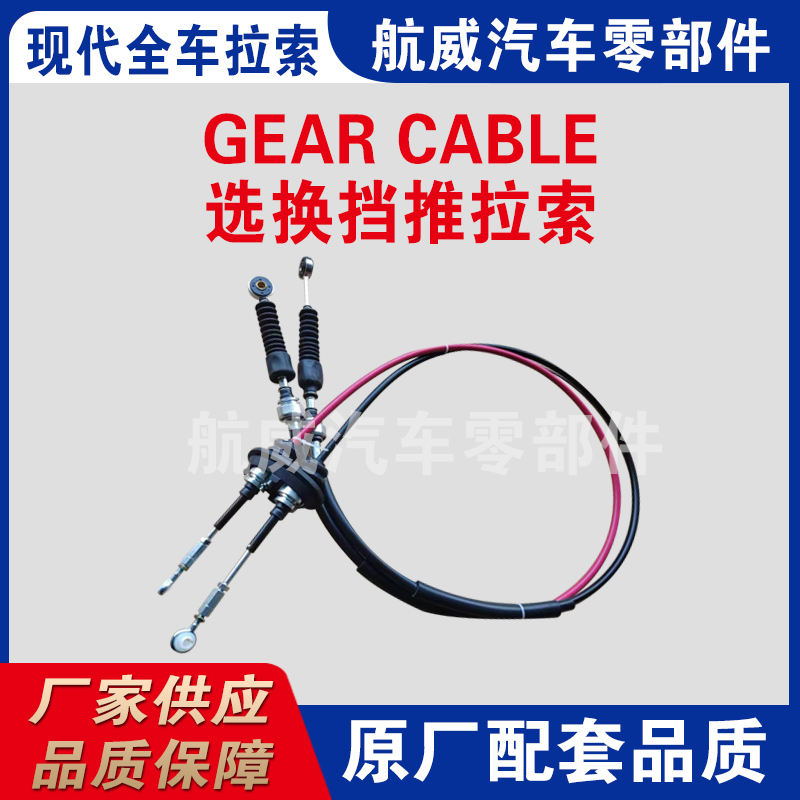Adjusting the Shifter Cable for Smooth Gear Transition and Performance Improvement
Changing the Shifter Cable A Comprehensive Guide
When it comes to maintaining your vehicle, one of the often-overlooked components is the shifter cable. This essential part connects your gear shifter to the transmission, allowing you to change gears smoothly. Over time, shifter cables can wear out or become damaged, leading to difficulties in shifting gears, or even complete failure. If you find yourself in this position, changing the shifter cable may be necessary. Here’s a comprehensive guide on how to do so effectively.
Understanding Shifter Cables
Shifter cables are typically made from durable materials to withstand the constant tension and movement required during gear shifts. However, exposure to harsh elements, dirt, and everyday wear can deteriorate these cables. Symptoms of a failing shifter cable include difficulty in shifting, grinding noises when changing gears, or the gear shifter feeling loose or unresponsive. If you notice any of these signs, it’s essential to act promptly to avoid further damage to your vehicle.
Tools and Materials Needed
Before starting the replacement process, gather the necessary tools and materials. Here’s a quick checklist
1. New Shifter Cable Ensure you purchase the correct model for your vehicle. 2. Wrench and Socket Set For loosening and tightening bolts. 3. Screwdrivers Both flathead and Phillips head. 4. Pliers To help with any stubborn clips or fasteners. 5. Jack and Jack Stands For safely lifting your vehicle if needed. 6. Safety Gear Gloves and goggles for protection.
Step-by-Step Guide to Changing the Shifter Cable
Follow these steps to change your shifter cable
Step 1 Safety First
Before starting any mechanical job, always ensure your vehicle is parked on a flat surface and secured with wheel chocks. Disconnect the battery to prevent any electrical hazards.
Step 2 Locate the Shifter Cable
changing shifter cable

The shifter cable runs from the gear shifter in the cabin to the transmission under the vehicle. You may need to remove some trim pieces around the gear shifter to access the cable connection. Depending on your vehicle, this might include removing the center console or dashboard components.
Step 3 Remove the Old Cable
Once you've accessed the shifter cable, identify the connection points. Typically, there will be a clip or bolt securing the cable to the shifter and another at the transmission. Use your pliers or wrenches to carefully detach the cable from both ends. Take note of how the cable is routed; this will help you install the new one correctly.
Step 4 Install the New Cable
Position the new shifter cable in the same routing as the old one. Secure the cable to the shifter first, ensuring it’s firmly attached with the appropriate clip or bolt. Then, proceed to connect the cable to the transmission. Double-check that all connections are tight and secure.
Step 5 Test the Mechanism
Before reassembling the interior, test the gear shifter to ensure it's functioning correctly. With the vehicle still in park, reattach the battery and sit in the driver’s seat. Move the shifter through all gears and listen for any unusual sounds. If everything appears normal, you’re ready to proceed.
Step 6 Reassemble and Final Checks
Reassemble any interior components you removed to access the shifter cable. Make sure everything is secured, and check again for proper functionality. It’s wise to take your vehicle for a short test drive to ensure everything is working smoothly.
Conclusion
Changing a shifter cable is a straightforward task, but it requires careful attention to detail. By following the steps outlined above, you can replace this essential component and restore the ease of shifting gears in your vehicle. Regular maintenance checks can also help identify issues before they become major problems, ensuring your vehicle operates at its best. Remember, if at any point you feel uncertain, it’s always beneficial to consult with a professional mechanic. Maintaining your vehicle is crucial for both performance and safety on the road.
-
Upgrade Your Clutch System with Premium Hydraulic Clutch LinesNewsJul.31,2025
-
Unlock the Power of Precision with Our Throttle CablesNewsJul.31,2025
-
Unleash Power and Precision with Our Accelerator CablesNewsJul.31,2025
-
Experience Unmatched Safety with Premium Handbrake CablesNewsJul.31,2025
-
Enhance Your Vehicle's Performance with Quality Gear CablesNewsJul.31,2025
-
Workings of Clutch Pipe and Hose SystemsNewsJun.04,2025
